The only constant in life is change Heraclitus
I’m sure most of us have heard this saying before, and if you are in the DevOps space, I’m sure this is a scenario that you deal with daily.
Most of us started even before we even had all these nice terms, such as DevOps, SREs, DevSecOps, and so many others, when we were all Sys Admins.
Back in the day, we built a lot of our automation using Shell scripts, so environments could be provisioned quickly, dependencies installed, and machines made available for developers to deploy their applications.
We all know that infrastructure and software are constantly evolving but what is surprising is the speed of change. It’s mind-blowing to think that we were building our first CI pipeline scripts just a few years ago or using new automation tools like Terraform and experiencing how much more we could do.
Today, the rate of change of the software stack, application dependencies and requirements, and dozens and dozens of independent components that we have to implement and maintain, such as monitoring, ingress, policies, and more, add complexity to our daily responsibilities.
We are builders by nature. We love exploring and experimenting with new technologies, building workflows that enable our teams and organizations to deliver applications faster.
We believe DevOps engineers are pushing the boundaries. Our goal is to help you build things your way, to help you create a structured workflow that brings together the components you choose while taking away many of the complexities, helping you deliver value quickly so that you can keep on building.
With that as the goal, our team delivered so many amazing updates to Shipa Cloud recently, and I would like to share some of those updates with you:
Terraform provider improvements
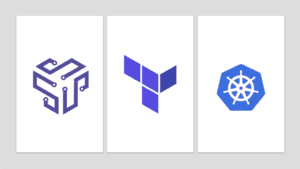
One of our key goals here at Shipa is to “meet you where you are,” and Terraform is an essential part of achieving that goal. The team recently released an update to our Terraform provider, enabling you to standardize application deployment and security using a common tool that is part of your stack. Using Terraform and Shipa, you can quickly implement a developer platform on top of Kubernetes, application policies, self-service, and more.
As part of our commitment to improving the provider, we use it internally to manage Shipa Cloud, roll out updates, and more, so we experience it the same way you do.
You can find detailed information about using the provider here: https://learn.shipa.io/docs/terraform.
Zero State
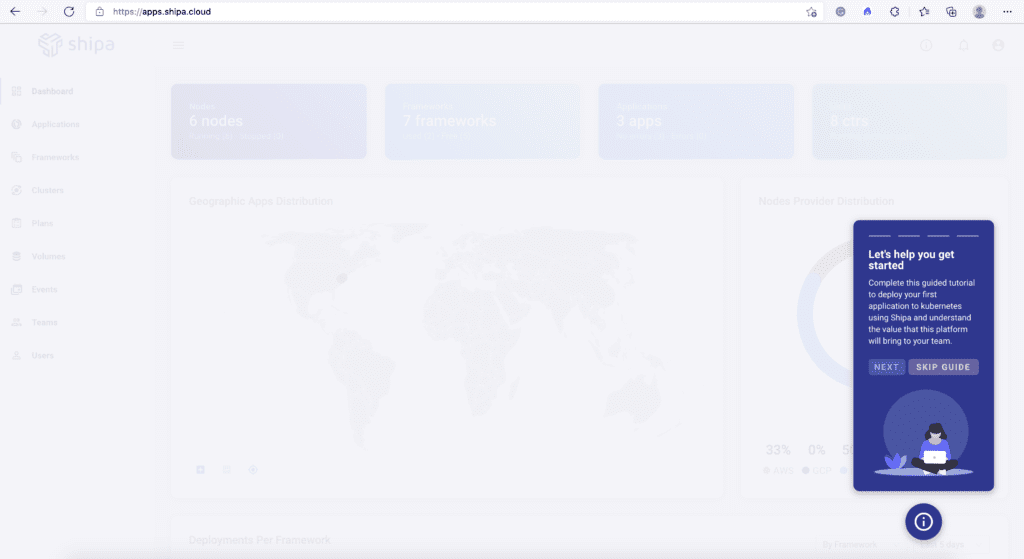
You have so much to deliver during the day. You have developers asking for a platform, you have management asking you for better SLAs, faster deployment, and more, so we want to enable you to get up and running as quickly as possible.
Now, when you sign up for the first time, we want to take you from 0 to have an application running as fast as possible, and we do that through a guided process. We bring you through the steps of defining an application policy framework, connecting this policy to a cluster, and deploying an application.
GitHub and Google Authentication
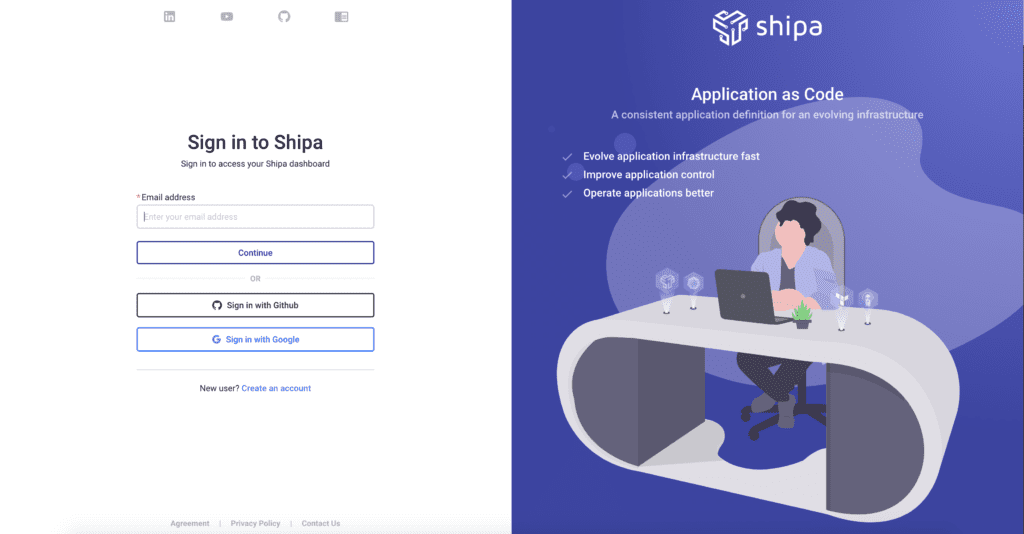
To enable you to start quickly, we have recently added the options to sign up and sign in using GitHub and Google Authentication.
User invitation
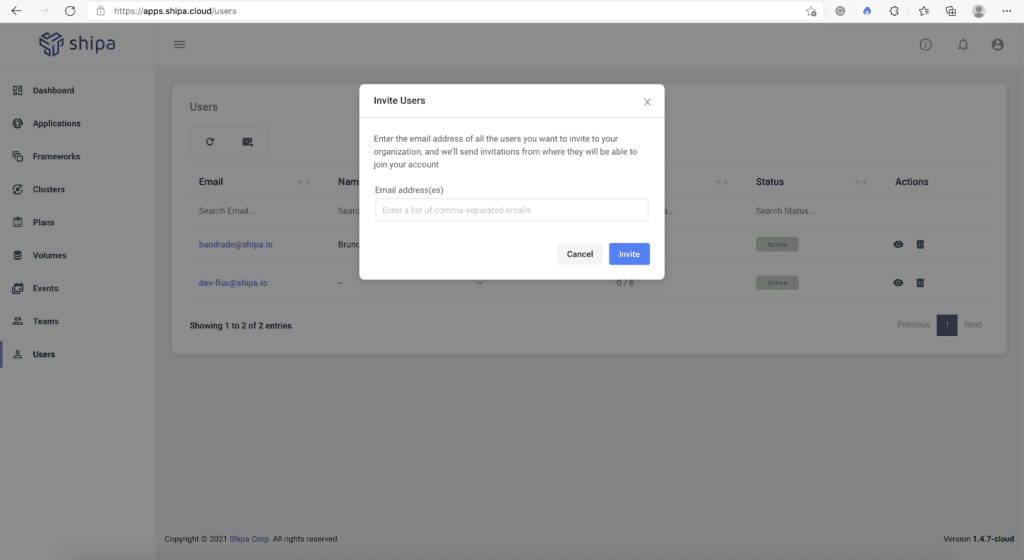
It’s never been easier to invite your team members to Shipa.
By bringing your teams into Shipa, you instantly give them an application platform to deploy and manage their applications while Shipa automatically enforces the policies you defined.
App Auto-Discover
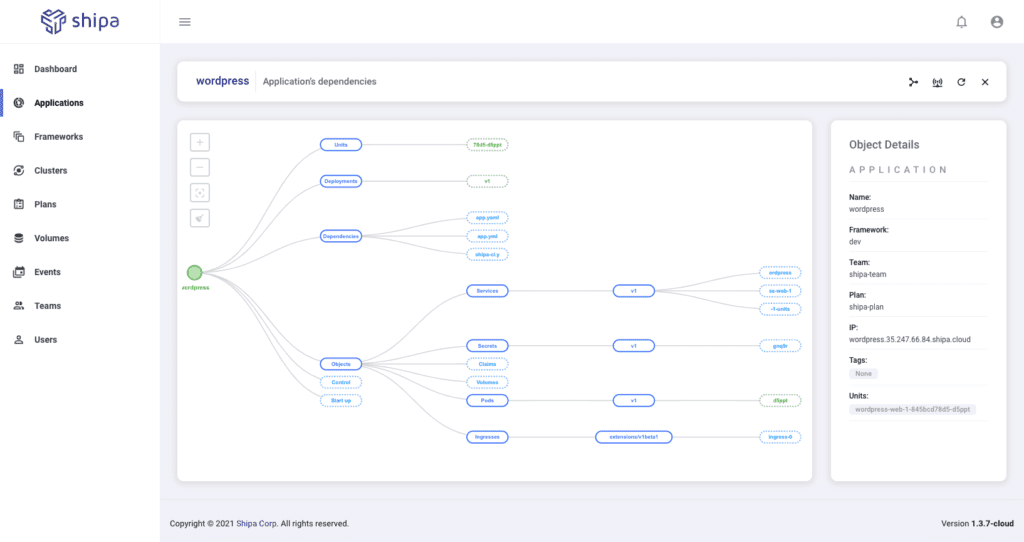
This is one critical update. The auto-discover feature allows you to “plug” Shipa into a cluster and namespace with running applications. By doing so, Shipa will automatically discover the applications deployed, it’s dependencies and start showing their status and object dependency map on Shipa’s dashboard.
App auto-discover helps you address requirements such as:
- Developers asking for better observability and understanding of their applications
- Tools like FluxCD do not offer an application portal. By plugging Shipa on namespaces where FluxCD is deploying applications, you quickly solve that problem.
- The number of applications deployed and users consuming your platform is increasing, so you need to give them better visibility over their applications and expose service ownership and more, so when it’s time to support those applications, you know who owns what.
The App auto-discover feature is also part of the effort to meet you where you are. If you already have applications deployed using traditional pipelines, GitOps, Terraform, Helm, or others, that is a perfect way to get started with Shipa and deliver value in minutes. App auto-discover helps you address requirements such as:
We will continue evolving the App Auto-Discover and add more functionalities to it soon.
Conclusion
You will keep on evolving infrastructure, building a unique and custom platform to your needs, and Shipa can be your help along the way.
Shipa brings all your choices and components together, automating the application layer, and helps you deliver value quickly, so you can focus your time on experimenting with new tools, choosing the right components, and being more productive.

